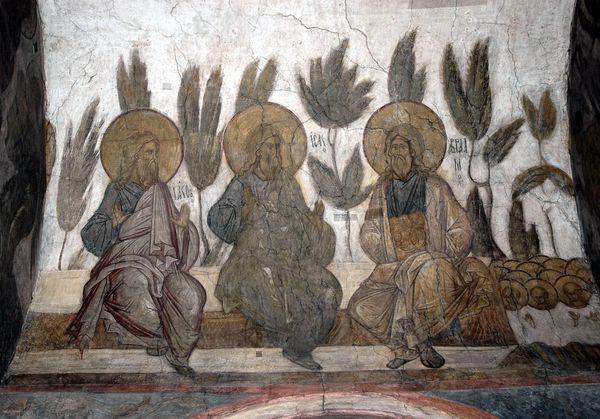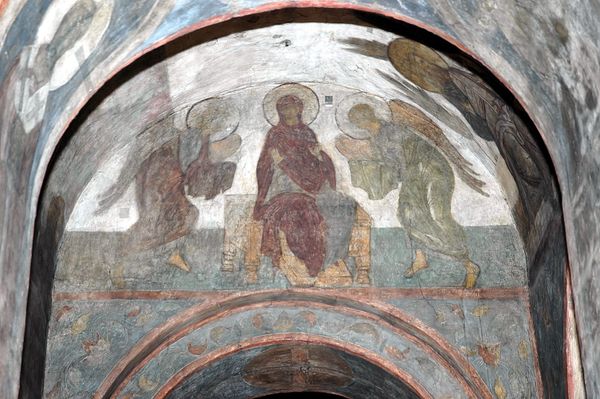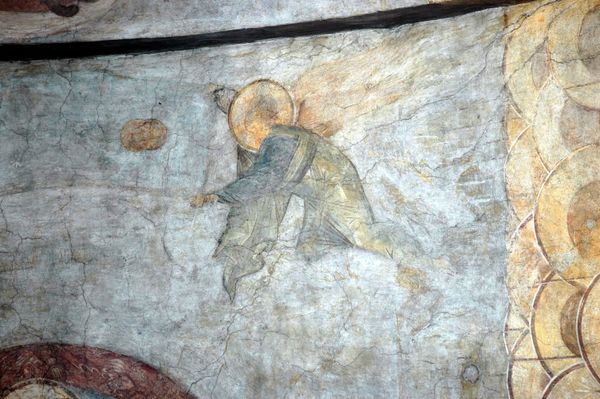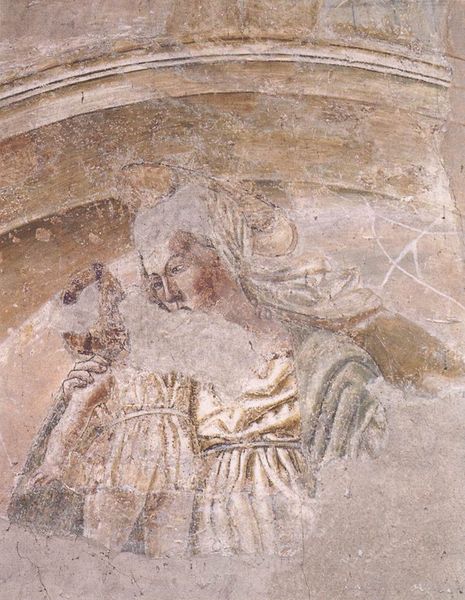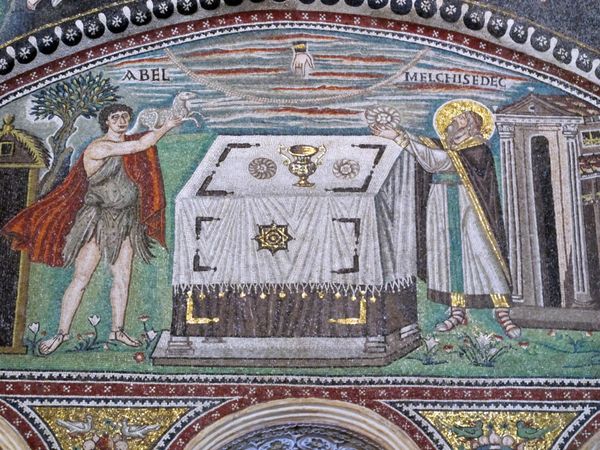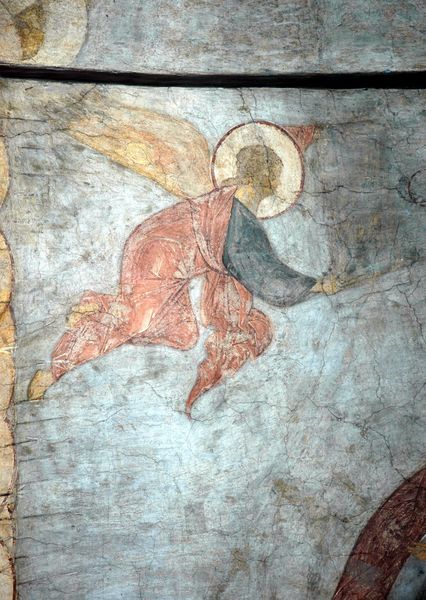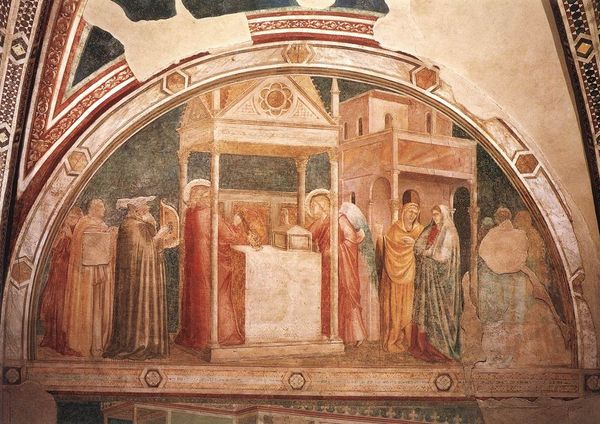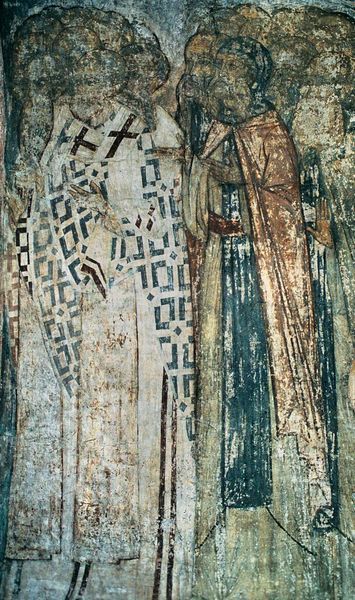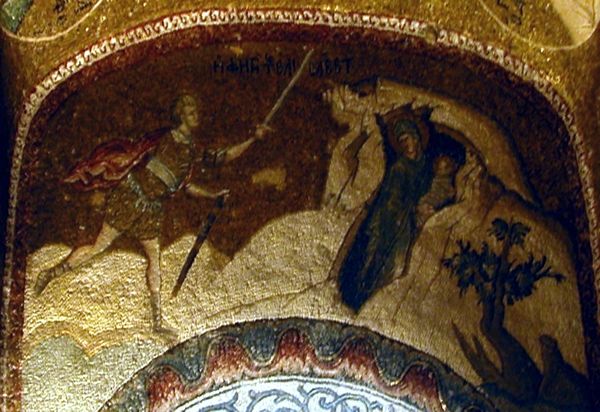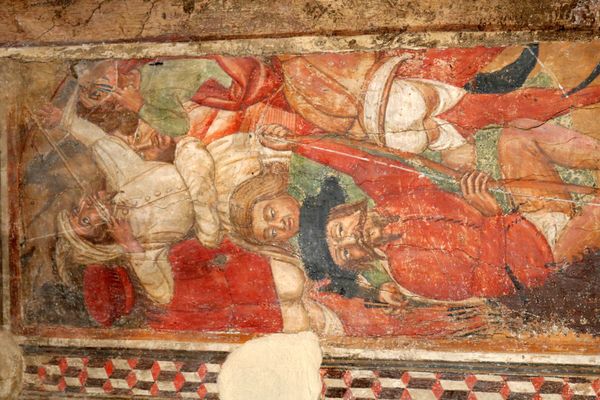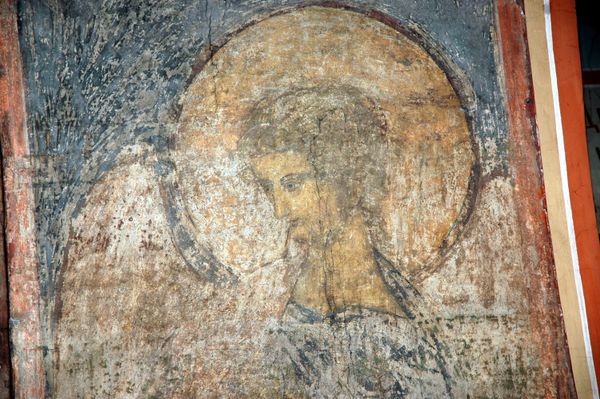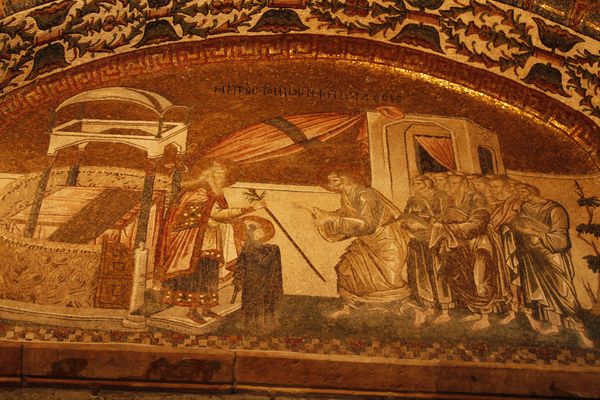
The Last Judgement: The souls of righteous 1408
0:00
0:00
andreirublev
Assumption Cathedral, Vladimir, Russia
tempera, painting, fresco
#
portrait
#
byzantine-art
#
medieval
#
tempera
#
painting
#
figuration
#
fresco
#
oil painting
#
christianity
#
men
#
painting painterly
#
history-painting
#
christ
Copyright: Public domain
Editor: This is a fresco fragment, "The Souls of the Righteous" from "The Last Judgement," painted in 1408 by Andrei Rublev for the Assumption Cathedral in Vladimir, Russia. It's... interesting. The faces feel very uniform, and it makes me wonder about the figures' identities. How do you interpret this work, especially considering its historical context? Curator: It's crucial to remember that Rublev was working within a very specific Byzantine artistic and theological tradition. These aren't meant to be individual portraits, but rather representations of collective piety and spiritual unity. What strikes me is the radical vision of hope that surfaces here. In a time marked by strife and social hierarchy, where religious imagery frequently served to enforce class divisions, Rublev presents a far more egalitarian and humanistic vision of salvation. Notice how all are included in this sea of righteous souls. Editor: That's fascinating, the egalitarianism. Is there something specifically in the visual construction that drives that feeling? Curator: Yes, the rhythmic repetition of faces and halos, along with the delicate brushwork, create a sense of harmony and interconnectedness, all rendered in a muted, accessible tonality. Moreover, the fresco medium itself democratizes the image. Painted directly on the church walls, it becomes an integral part of the people's shared space and daily lives, a shared promise of eternal life in troubled times. In what ways do you think the fresco’s medium shapes its social role? Editor: I hadn't considered that. I guess being on a wall makes it much more public than a painting only the wealthy could see. Thanks! I see how its message of salvation would affect the public, a more democratic faith. Curator: Precisely! Considering works of art this way illuminates the intricate links between visual representation, socio-political context, and lived experience, hopefully inspiring new ways of experiencing works of art. Editor: I'll definitely keep this in mind. This dialogue really opens my eyes to understanding art in society and cultural studies!
Comments
No comments
Be the first to comment and join the conversation on the ultimate creative platform.
